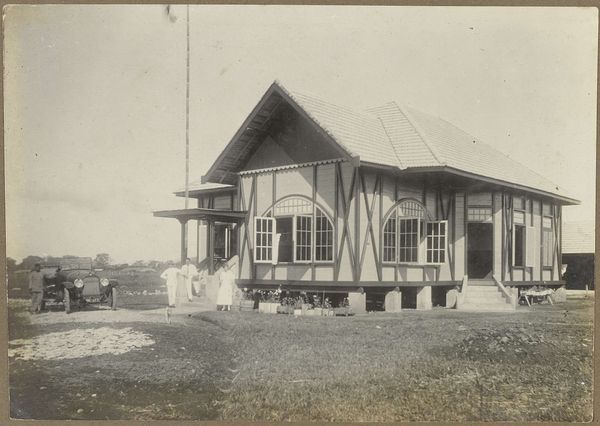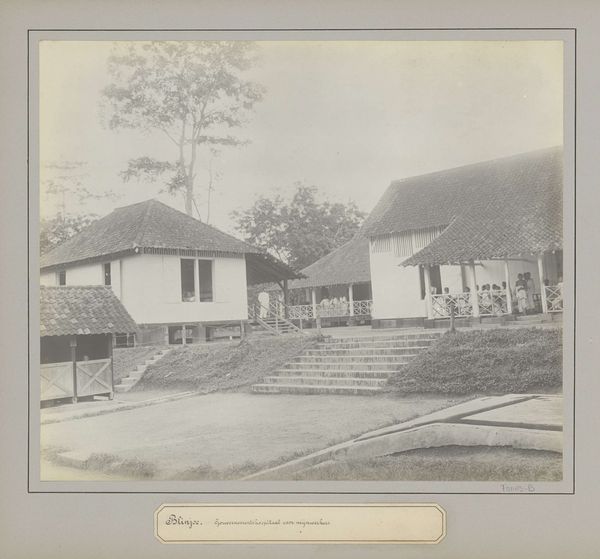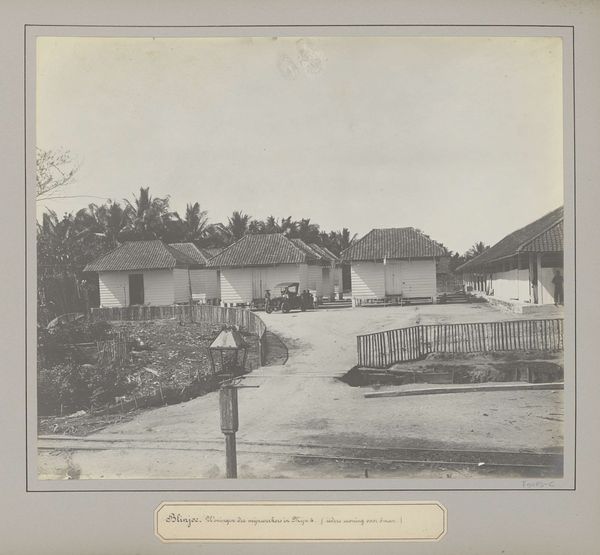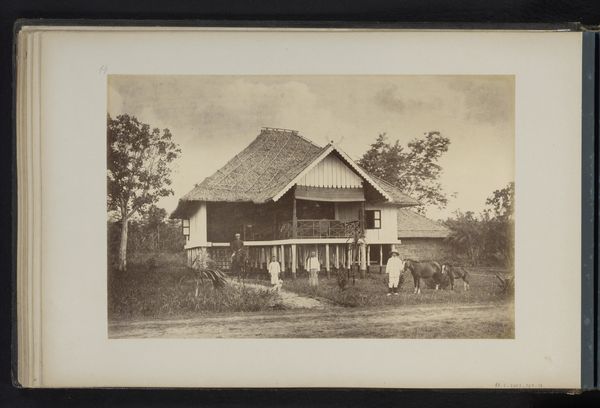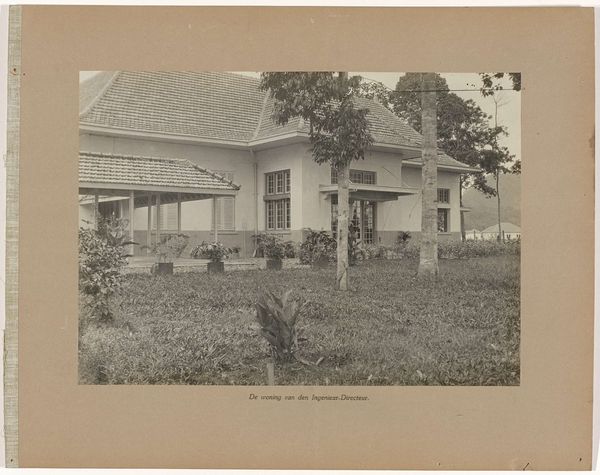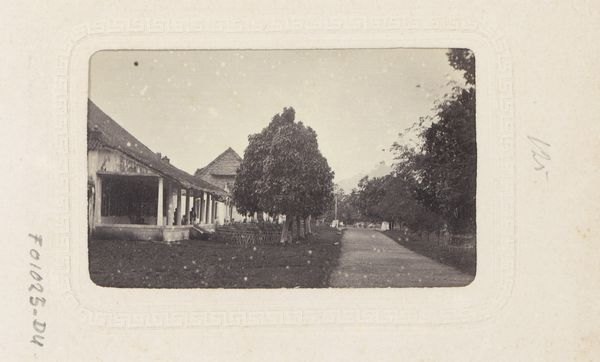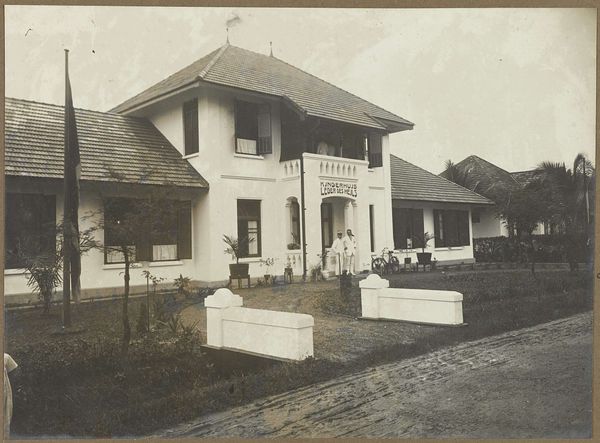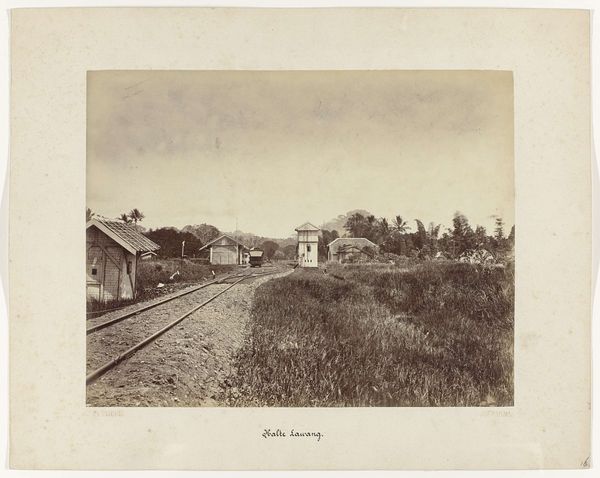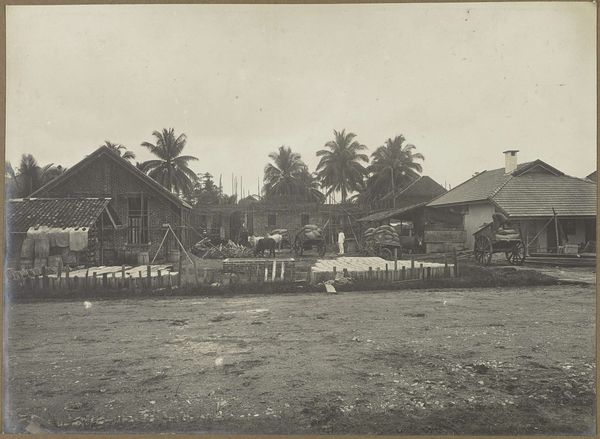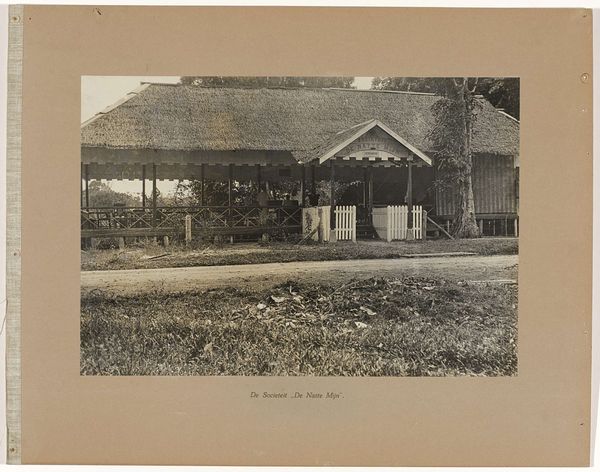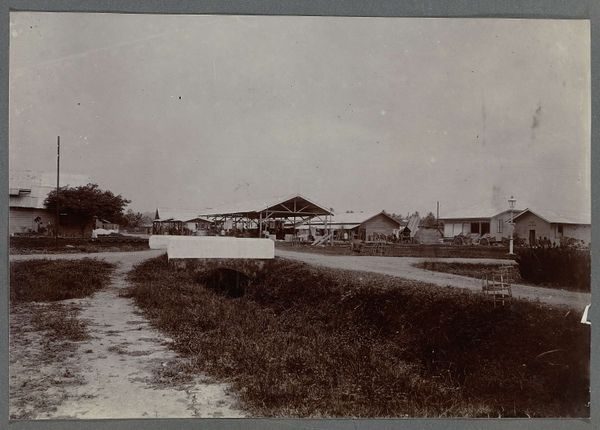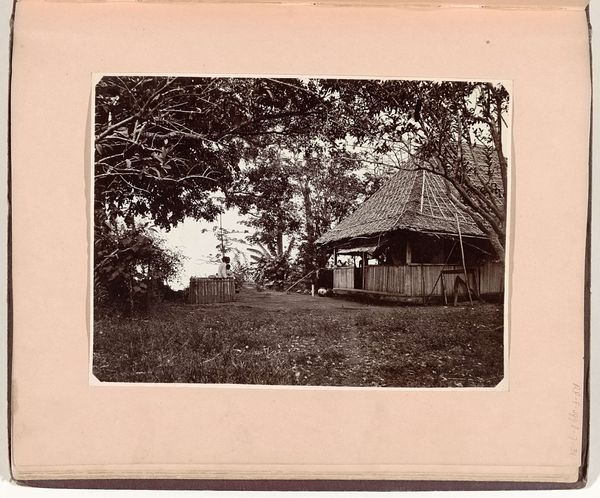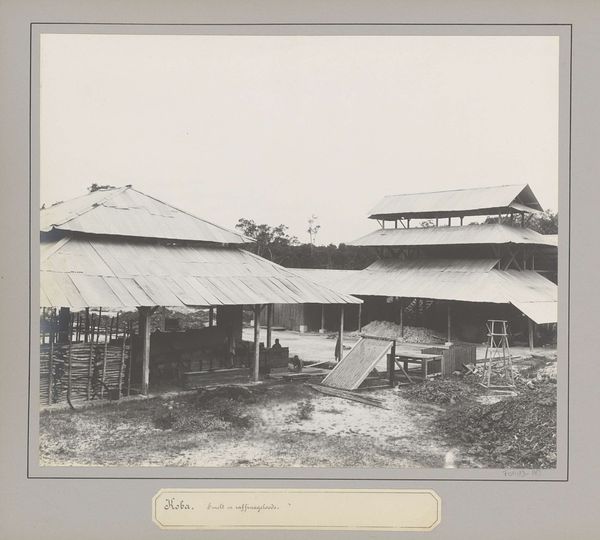
photography, gelatin-silver-print
#
aged paper
#
landscape
#
photography
#
gelatin-silver-print
Dimensions: height 106 mm, width 172 mm
Copyright: Rijks Museum: Open Domain
Curator: This evocative photograph, a gelatin-silver print, is titled "Kamp geneesheer Sectie W - Kamp T - K.M. 100," dating roughly from 1905 to 1910, and was taken by Augusta Curiel. What are your first impressions? Editor: It has a strangely melancholic air. The landscape, rendered in shades of grey, feels both still and isolated. The aged paper itself adds another layer of history, I think, doesn't it? Curator: Absolutely. Understanding the context of this image is vital. Curiel was documenting life in Suriname during a period of intense social and economic change, driven by resource extraction and colonial administration. The railway hints at the infrastructural developments, but at what human cost? Editor: Precisely. Look at the materials – the thatched roof and the simple construction of these buildings, presumably made with locally sourced timber. These are built structures directly embedded in the land and its available resources, showing something elemental, almost. There is that railway too, in contrast, running on top. Curator: Indeed. These seemingly unassuming buildings, possibly connected to a medical outpost—"geneesheer" indicates a doctor or healer—force us to confront questions about access to healthcare, particularly for marginalized communities working in extractive industries far from any centralized town or city. Where did these workers live? Where they segregated or segregated by class, ethnic identity or gender? Editor: The presence of the railway really strikes me. Its metal contrasts starkly with the natural environment and organic building materials. It brings to the fore how technology shapes both the landscape and the human experiences contained within it, in a way both enabling and constraining. Curator: And consider the photograph itself as a material object—the gelatin-silver print. It is also evidence of labor: Curiel's, the processors', the laborers whose work allowed for the creation and circulation of images like this. Her own background, as a woman and photographer, would have placed her as an outsider also within this system. Editor: It's a confluence of organic and industrial. And you're right—Curiel's labor, converting a three-dimensional experience into a reproducible, accessible form… there is so much captured in its creation and re-creation. Curator: Yes. Curiel, through her photography, provides us not just with a landscape but with a space to consider colonial medicine, class stratification, infrastructural imposition, and, quite essentially, human resilience. Editor: Agreed. Reflecting on both its composition and the tangible elements, there’s a complex interplay of human intervention, natural materials, and broader global currents that’s very striking. It reminds us to engage more actively with historical making to interpret its significance in broader ways.
Comments
No comments
Be the first to comment and join the conversation on the ultimate creative platform.
